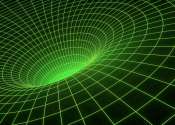Searching for new asymmetry between matter and antimatter
Once a particle of matter, always a particle of matter. Or not. Thanks to a quirk of quantum physics, four known particles made up of two different quarks—such as the electrically neutral D meson composed of a charm quark ...









